Abstract
Arthrobacter 4-44-2 (ATCC 25581), capable of subterminal oxidation of n-hexadecane to 2-, 3-, and 4-alcoholic and ketonic products, was examined for the ability of this methylene hydroxylase capability to be induced and repressed and for structural relationships influencing methylene function oxidation. Induction was best carried out by use of n-alkanes from 10 to 16 carbons in length and was especially strong with methylcyclohexane among cyclic compounds tested. Induction was not observed with several related alcohols, 1-unsaturated compounds, or methoxy and ethoxy compounds tested. After induction, n-alkanes 14 and 16 carbons in length were transformed to the corresponding internal oxidation products; however, no activity was observed with even-carbon alkanes of shorter chain length. Hexadecene-1 and all alcohols tested, including cyclododecanol, were transformed to corresponding ketonic or aldehydic products. Cyclic compounds tested, including cyclododecane, were not oxidized by induced cells, suggesting that a methyl group plays a role in orientation of the substrate for the methylene hydroxylation but that the methyl function was not as critical after completion of the hydroxylation step regardless of structural configuration. Acetate strongly repressed induction of n-hexadecane methylene hydroxylase activity. Inducibility of methylene hydroxylase activity was confirmed by use of cell-free systems with methylcyclohexane as an inducer. A stimulation of methylene hydroxylase activity by addition of reduced pyridine nucleotides and ferrous ion was indicated.
Full text
PDF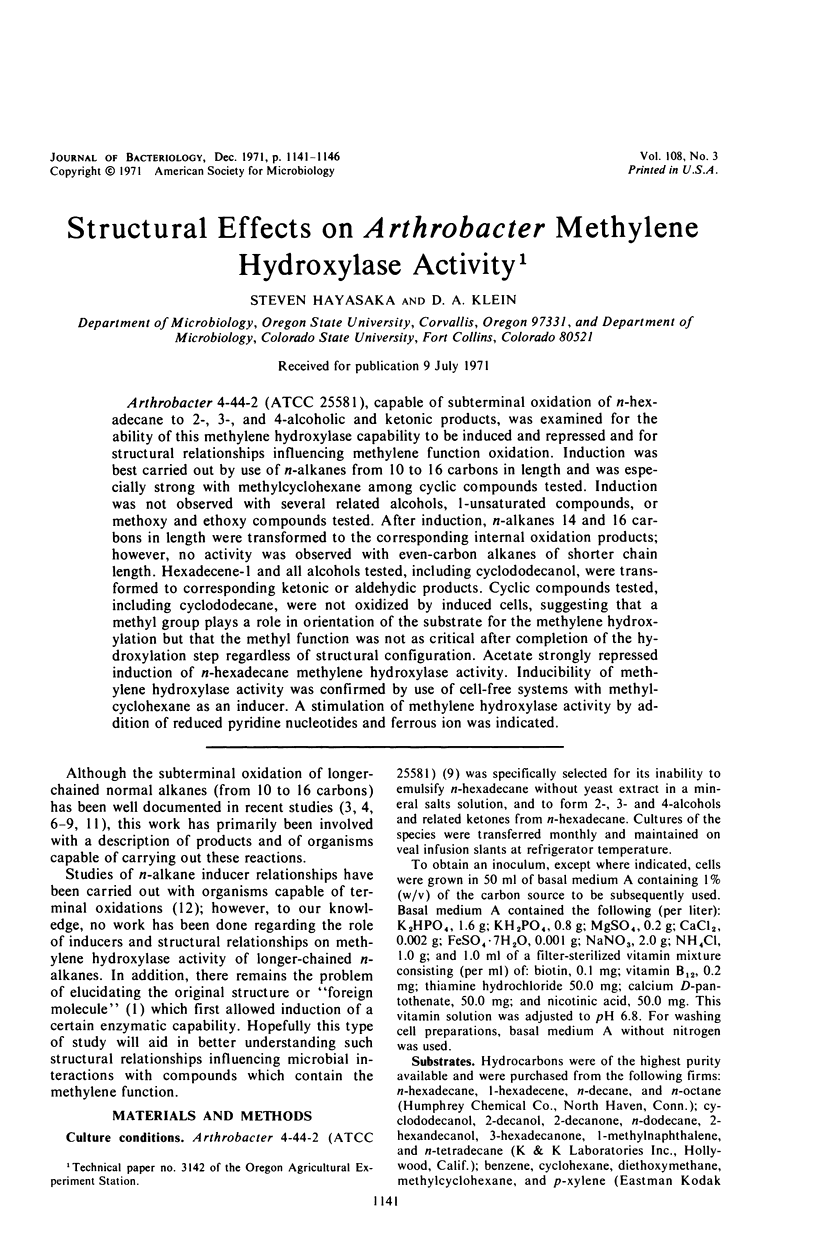
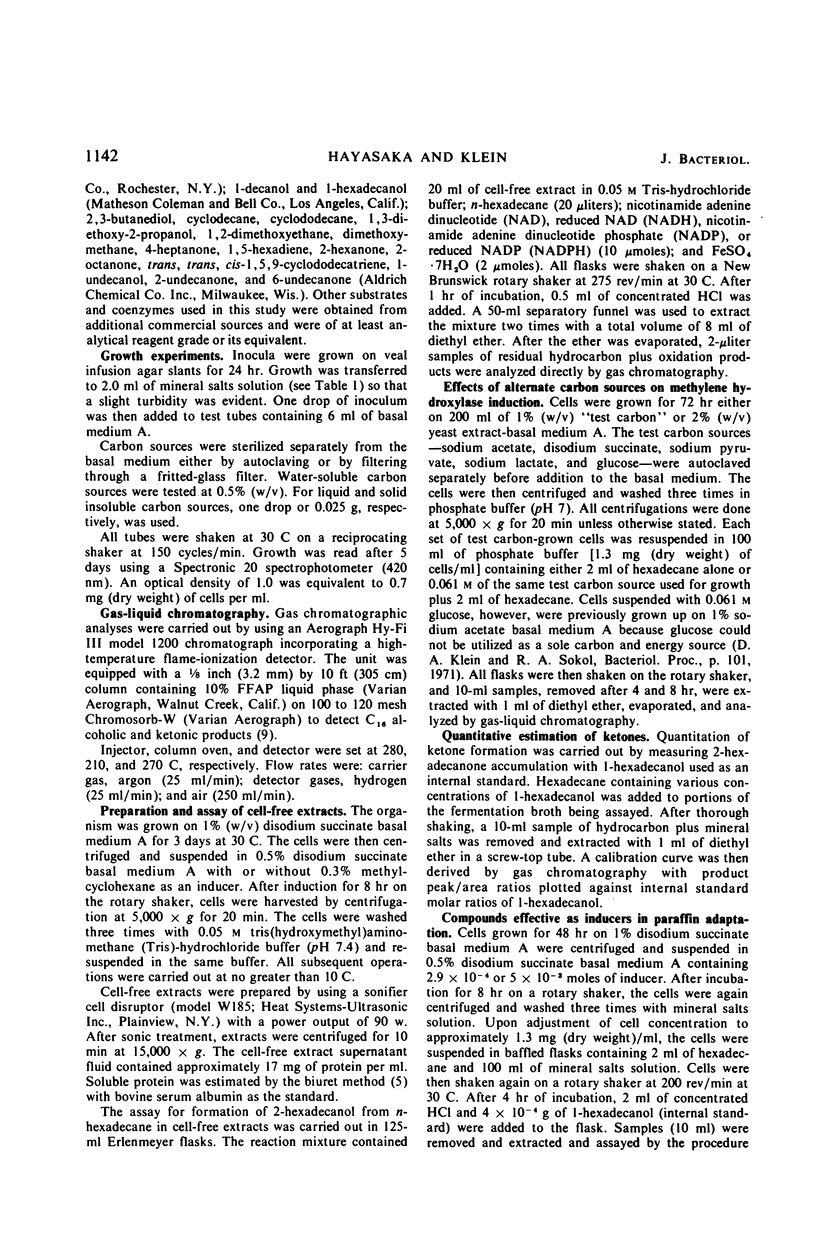
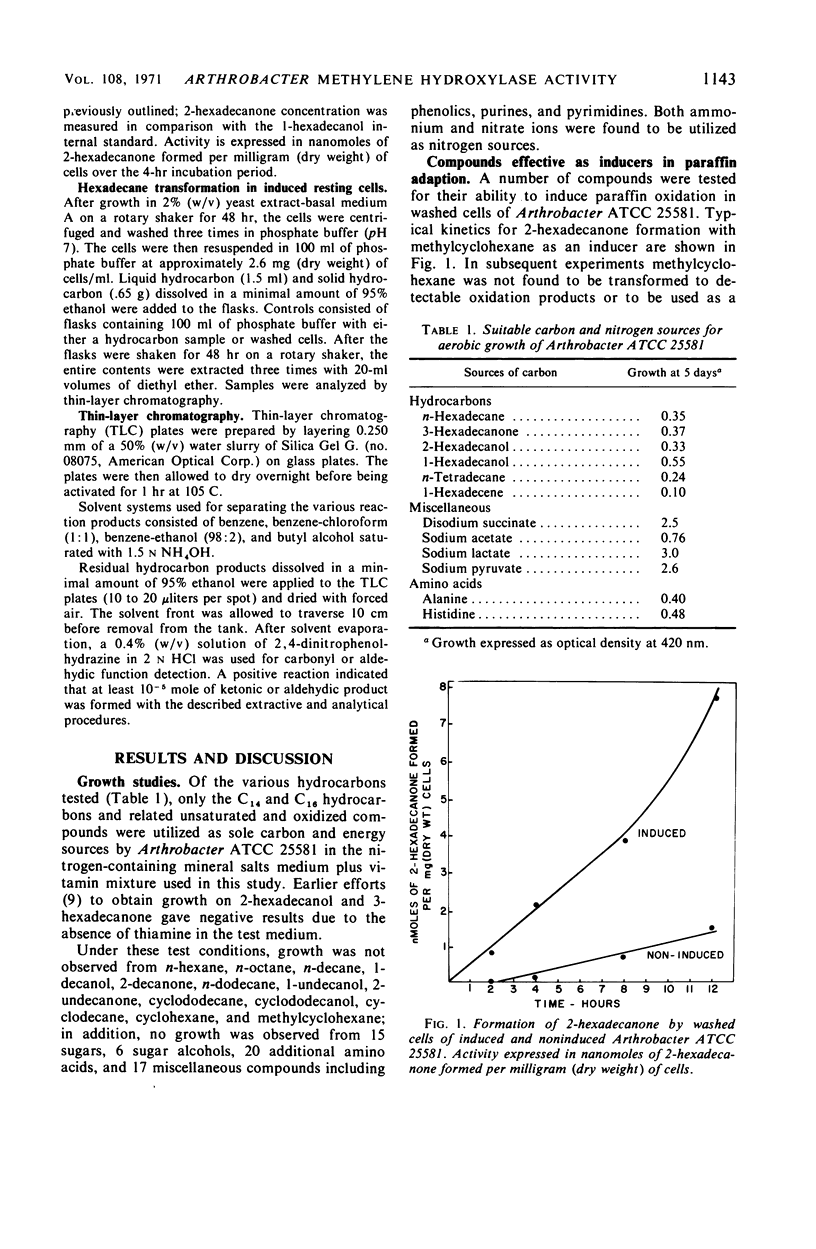
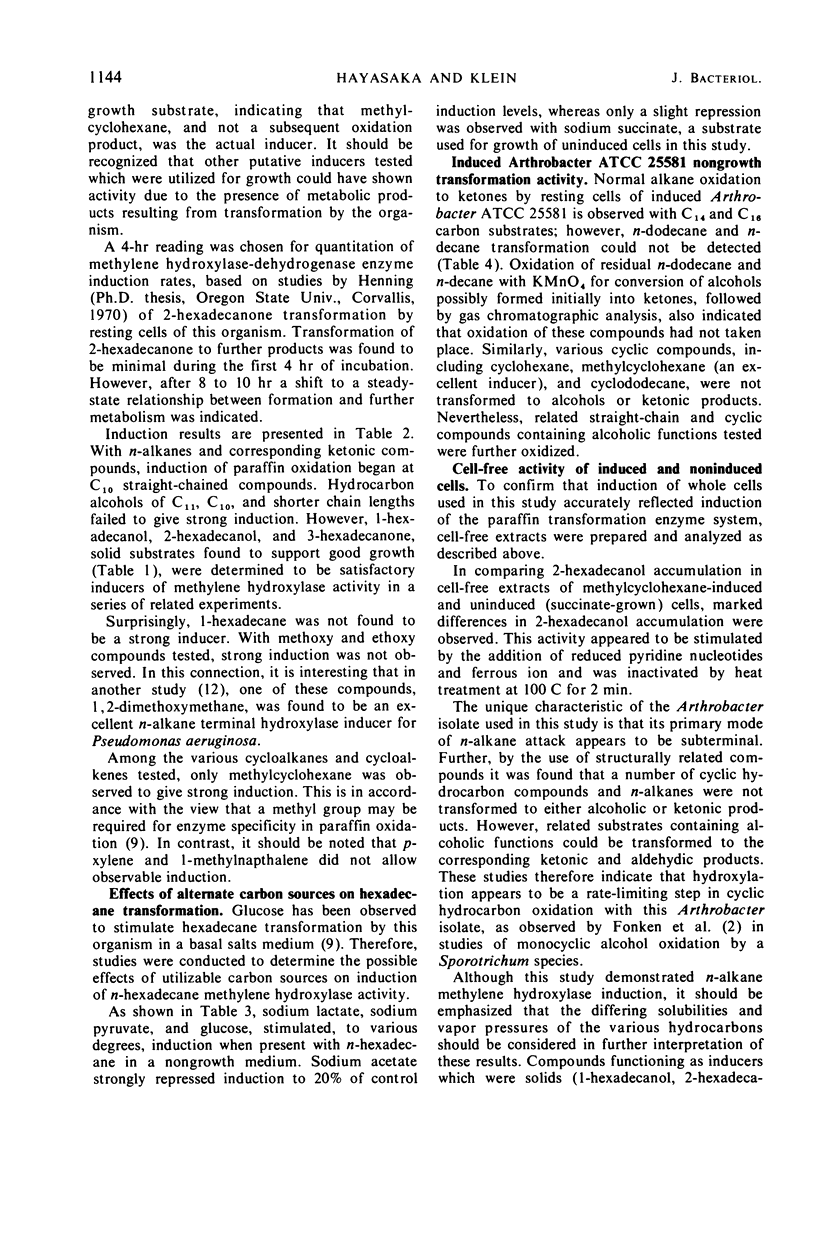
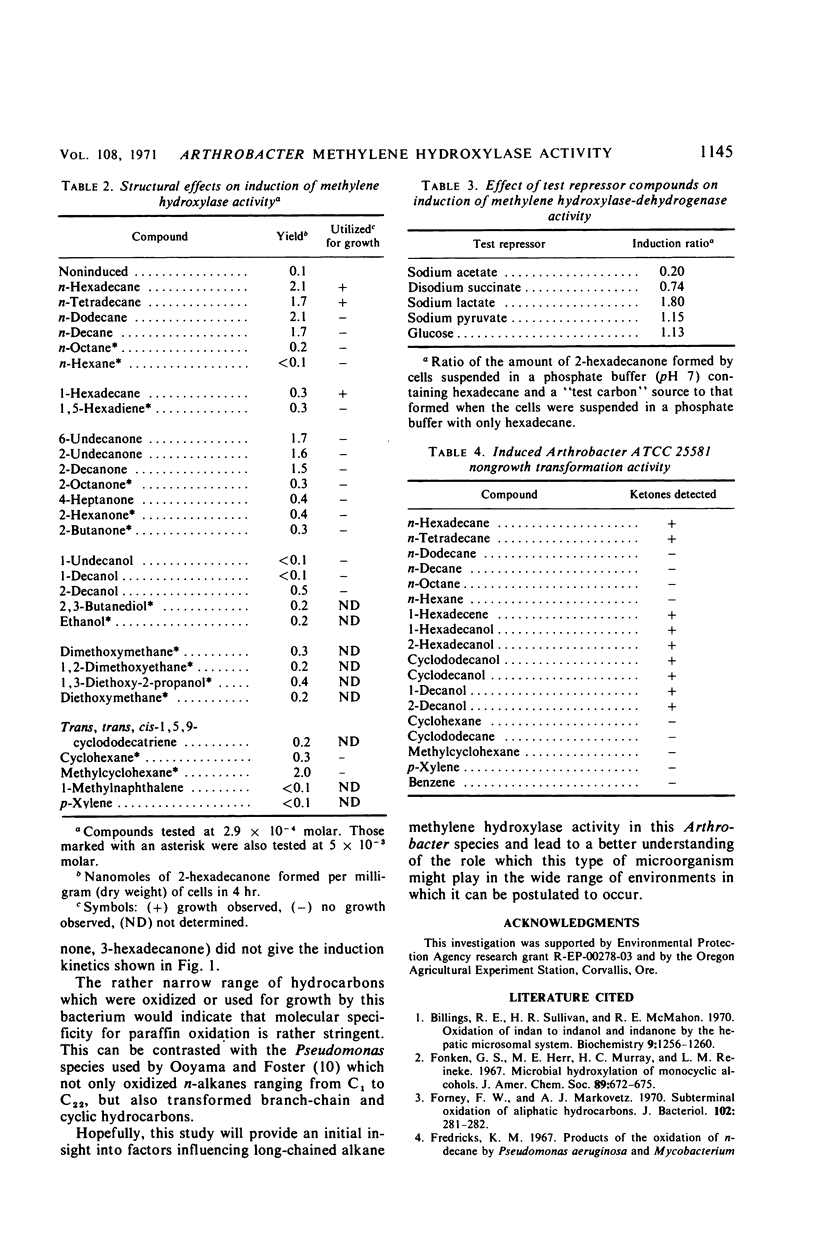
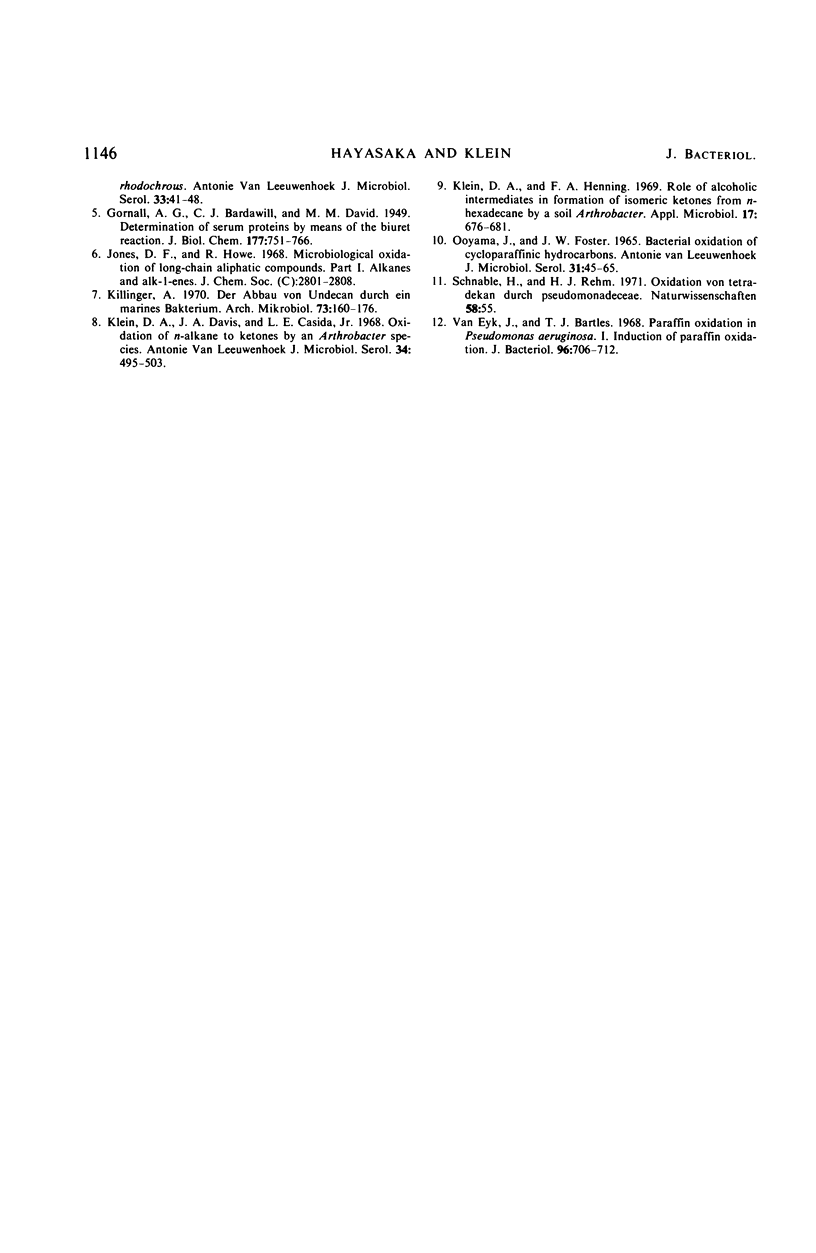
Selected References
These references are in PubMed. This may not be the complete list of references from this article.
- Billings R. E., Sullivan H. R., McMahon R. E. Oxidation of indan to indanol and indanone by the hepatic microsomal system. Biochemistry. 1970 Mar 3;9(5):1256–1260. doi: 10.1021/bi00807a029. [DOI] [PubMed] [Google Scholar]
- Fonken G. S., Herr M. E., Murray H. C., Reineke L. M. Microbiological hydroxylation of monocyclic alcohols. J Am Chem Soc. 1967 Feb 1;89(3):672–675. doi: 10.1021/ja00979a035. [DOI] [PubMed] [Google Scholar]
- Forney F. W., Markovetz A. J. Subterminal oxidation of aliphatic hydrocarbons. J Bacteriol. 1970 Apr;102(1):281–282. doi: 10.1128/jb.102.1.281-282.1970. [DOI] [PMC free article] [PubMed] [Google Scholar]
- Fredricks K. M. Products of the oxidation of n-decane by Pseudomonas aeruginosa and Mycobacterium rhodochrous. Antonie Van Leeuwenhoek. 1967;33(1):41–48. doi: 10.1007/BF02045532. [DOI] [PubMed] [Google Scholar]
- Jones D. F., Howe R. Microbiological oxidation of long-chain aliphatic compounds. I. Alkanes and alk-1-enes. J Chem Soc Perkin 1. 1968;22:2801–2808. doi: 10.1039/j39680002801. [DOI] [PubMed] [Google Scholar]
- Killinger A. Der Abbau von Undecan durch ein marines Bakterium. Arch Mikrobiol. 1970;73(2):160–176. [PubMed] [Google Scholar]
- Klein D. A., Davis J. A., Casida L. E., Jr Oxidation of n-alkanes to ketones by an Arthrobacter species. Antonie Van Leeuwenhoek. 1968;34(4):495–503. doi: 10.1007/BF02046471. [DOI] [PubMed] [Google Scholar]
- Klein D. A., Henning F. A. Role of alcoholic intermediates in formation of isomeric ketones from n-hexadecane by a soil Arthrobacter. Appl Microbiol. 1969 May;17(5):676–681. doi: 10.1128/am.17.5.676-681.1969. [DOI] [PMC free article] [PubMed] [Google Scholar]
- OOYAMA J., FOSTER J. W. BACTERIAL OXIDATION OF CYCLOPARAFFINIC HYDROCARBONS. Antonie Van Leeuwenhoek. 1965;31:45–65. doi: 10.1007/BF02045875. [DOI] [PubMed] [Google Scholar]
- Schnabl H., Rehm H. J. Oxidatin von Tetradekan durch Pseudomonadaceae. Naturwissenschaften. 1971 Jan;58(1):55–55. doi: 10.1007/BF00620811. [DOI] [PubMed] [Google Scholar]
- van Eyk J., Bartels T. J. Paraffin oxidation in Pseudomonas aeruginosa. I. Induction of paraffin oxidation. J Bacteriol. 1968 Sep;96(3):706–712. doi: 10.1128/jb.96.3.706-712.1968. [DOI] [PMC free article] [PubMed] [Google Scholar]


